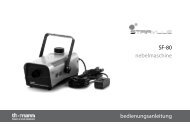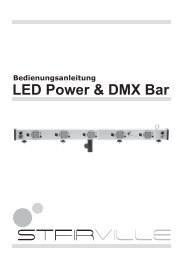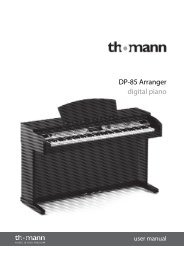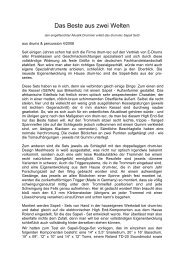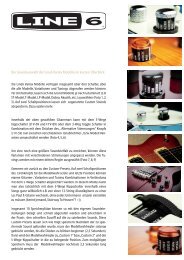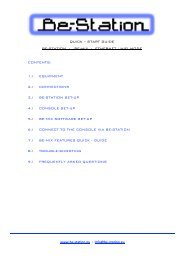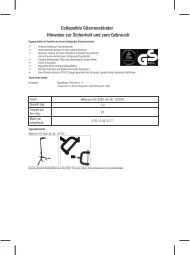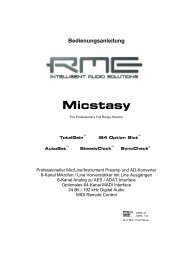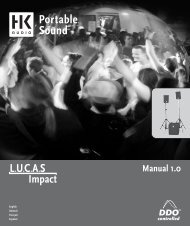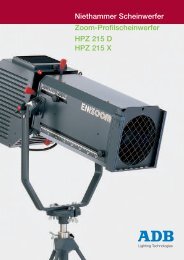You also want an ePaper? Increase the reach of your titles
YUMPU automatically turns print PDFs into web optimized ePapers that Google loves.
1:6 Status Bar<br />
MIDI<br />
Log<br />
MIDI Log<br />
RAM<br />
indicator<br />
MIDI & audio<br />
stream<br />
indicators<br />
Clicking this button opens an external MIDI log window, making it easy to view and troubleshoot incoming MIDI events. The<br />
contents of the log are identical to the smaller log built into the Keymap page.<br />
See section 8:4 for more details of MIDI logging in BFD2.<br />
Audio stream indicator<br />
The Audio stream indicator lights up when BFD2 has successfully launched and been integrated into the host audio engine<br />
(when running as a plugin) or when the standalone version of BFD2 has successfully established communication with the<br />
specified audio device.<br />
MIDI stream indicator<br />
This indicator lights up whenever BFD2 receives any MIDI input.<br />
RAM indicator<br />
This indicator displays how much RAM is being used by BFD2. This includes the cached start portion of each sound,<br />
plus a small overhead for BFD2’s engine.<br />
CPU and hard disk performance meters<br />
The 3 horizontal meters in the status bar provide a performance<br />
guage for several aspects of BFD2’s system resource<br />
usage.<br />
Synthesis engine CPU usage<br />
The synthesis engine is involved in receiving MIDI input or generating Groove engine events and playing back the relevant articulations.<br />
Mixer engine CPU usage<br />
The mixer engine processes all routing, mixing and FX functions in BFD2.<br />
Hard disk load<br />
This meter indicates the intensity of hard disk resource usage. Do not be alarmed if this meter reaches high values, as your<br />
machine may well be able to handle a large amount of disk usage. It is intended as an indicator of the amount of hard disk activity<br />
that is occurring.<br />
If your machine cannot handle the amount of disk usage required, the side-effects are usually clearly audible – tails may be cut or<br />
intermittent, and audio dropouts or other artifacts may occur.<br />
Offline switch<br />
CPU & HD<br />
performance<br />
meters<br />
Offline<br />
switch<br />
Controller<br />
learn<br />
Context info<br />
display<br />
This switch is intended for use with hosts that provide an offline (non-realtime) bounce or mixdown facility. When the Offline<br />
switch is on, BFD2 waits for all data to be properly delivered from the hard disk before allowing the host to continue,<br />
ensuring that sounds are not cut off before their full decay is complete.<br />
Please note that Offline mode is non-realtime, and should only be used during offline mixdown or rendering in your sequencer, if<br />
it even offers this feature. Do not leave the Offline switch enabled during ordinary playback.<br />
If your sequencer only provides realtime bouncing facilities (a good example is Pro Tools), you should leave Offline mode turned<br />
off at all times.<br />
1<br />
Transport<br />
controls<br />
Rude<br />
solo light<br />
Tempo<br />
Beat light Time<br />
signature<br />
Playback<br />
position<br />
Synthesis CPU<br />
Mixer CPU<br />
Hard disk load



